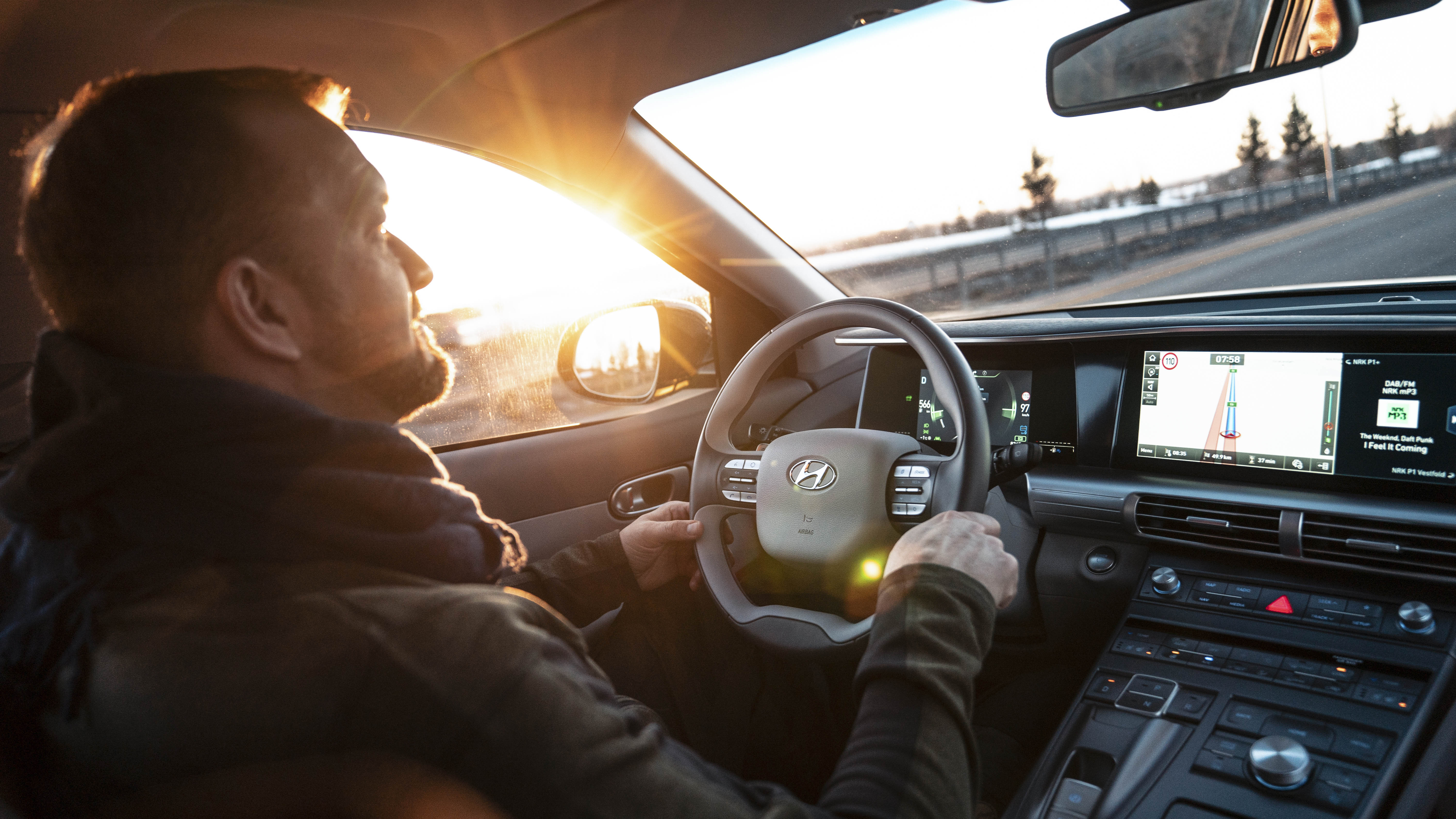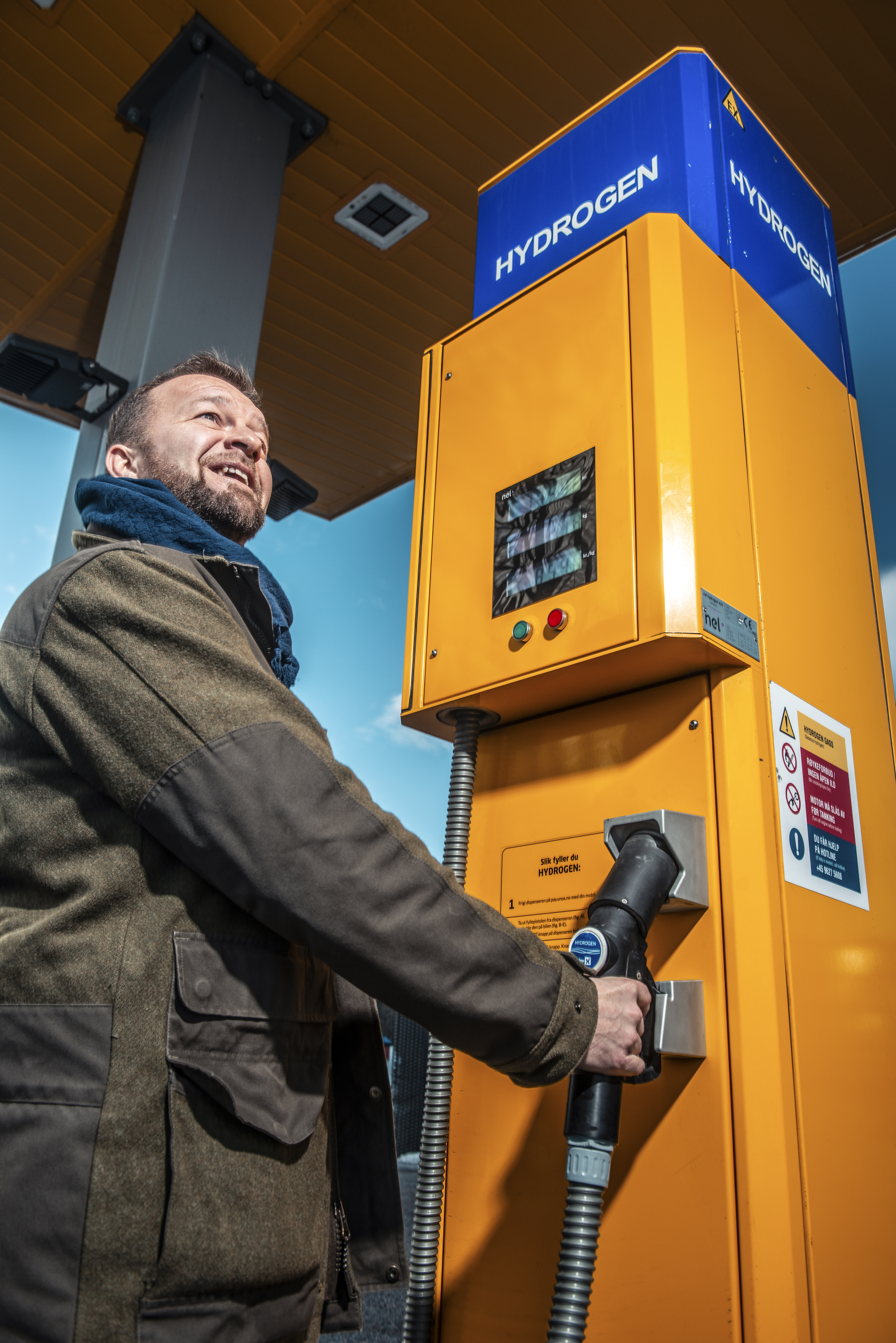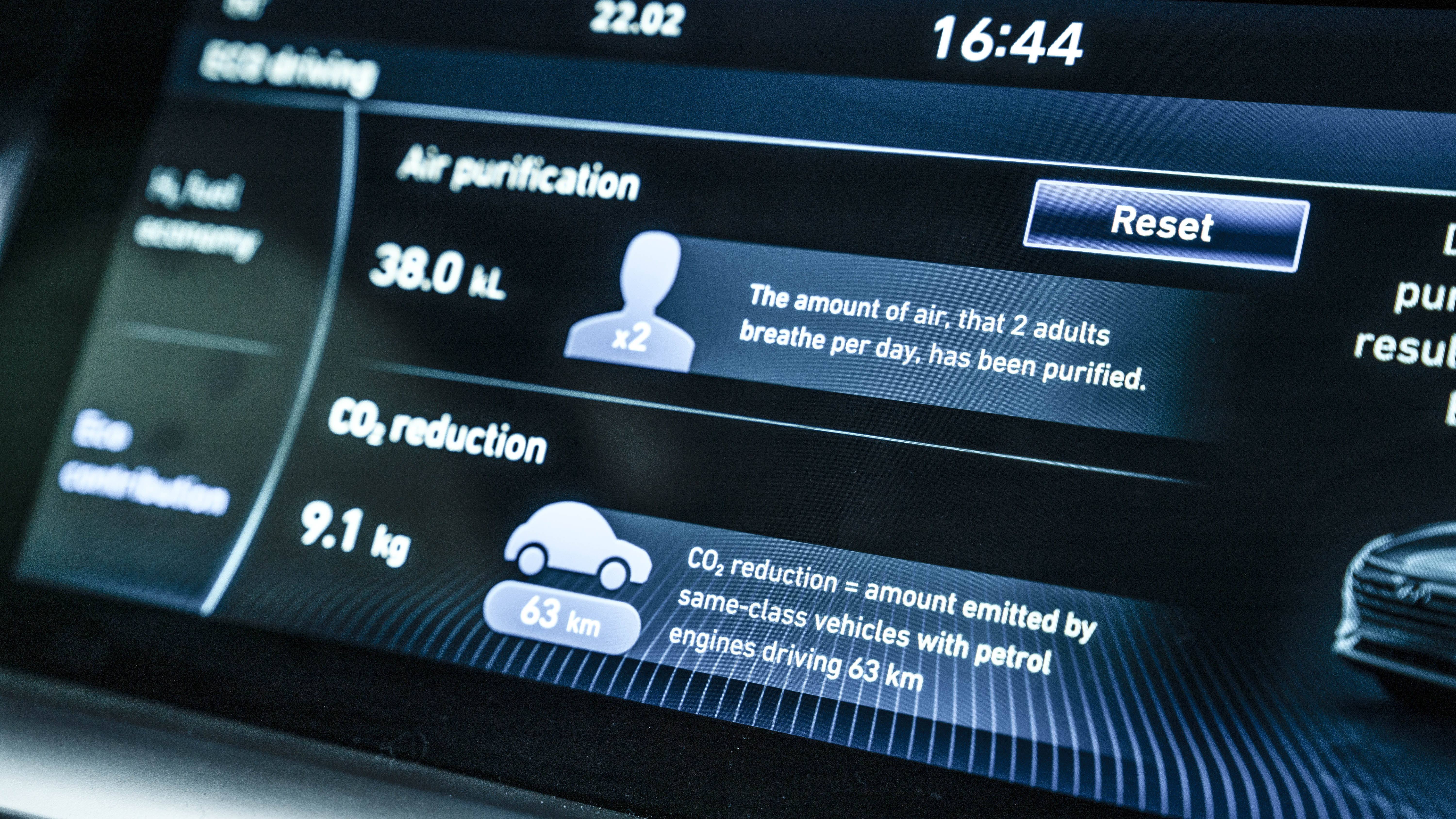
Hyundai Nexo in Norway: can you roadtrip a hydrogen car?
The Nexo is so normal, you’d be forgiven for forgetting it’s high-tech. Until you need to fill up
There is a place on the Norwegian RV7 road between – roughly – Maurset and Øvre Eidfjord, just to the south of the Vøringfossen, where you transition from slightly anonymous trunk route to breath-snatching beauty via a rock tube made by drunk people. One moment you’re happily pottering along, the next you enter an innocuous tunnel – there are lots hereabouts – and spiral around inside a mountain like a confused marble, looping twice before popping out in the gaping granite maw of a giant crack in the landscape. There are waterfalls frothing mightily from the edges of cliffs, a river filled with the boundless energy of excess gravity, the softer features of the area swept up and stuffed into this little land-based cove of green and grey. It’s not… pretty, as such – too harsh for that, the kind of view that’s either geological ruin or majesty, I can never work out which. But it’s about as impressive as vistas get, the vigorous side of epic and deeply, unavoidably, ancient. And at the bottom of one of nature’s oldest wonders now sits one of humankind’s newest: a hydrogen car.
Words: Tom Ford
Photography: Rowan Horncastle
It’s a Hyundai Nexo. And even though hydrogen power has been around since the 1800s (widely used for gas street lamps before the car was even invented, and Welshman Sir William Robert Grove invented the first fuel cell in 1839), the Nexo is one of very few modern cars designed exclusively with hydrogen power in mind. Which is a surprise, because when you power a fuel cell with hydrogen, the only thing you produce is electricity and… water. But more of that in a bit. In the meantime, we have a hydrogen Nexo with a battery and an electric motor up front and three individual Kevlar/carbon-fibre tanks of hydrogen stuffed under the rear seats, roadtripping across Norway in some of the harshest environments we can find. The twist being that hydrogen is relatively hard to come by, and roadtripping a hydrogen car is therefore fraught with more logistical issues than you might expect. We’ve got roughly half a tank of hydrogen left, decent mileages to cover before we can top up in Bergen with the tiniest of fuellish atoms, and no back-up plan. Welcome to the reality of the greenest roadtrip in Europe.
The driving itself is completely without issue. A Nexo, on the move, is an electric car. Switch it on, push the button for Drive and… drive. It handles acceptably, though it feels heavy and uncompromisingly FWD, emits a gentle Star Trek whoosh at slower speeds, and is otherwise silent apart from tyre grumble. The brakes work perfectly well – you’ll find yourself using the three-stage regenerative braking system accessed by the paddles on the back of the steering wheel as a kind of game, seeing if you can avoid the actual brakes as much as possible – and the steering is accurate, if video-game numb. It seats five. It looks quite nice. There’s a boot. It is otherwise unremarkable.
Which is kind of the point. Hyundai has quietly pursued the advancement of hydrogen passenger car tech for the past few years as an add-on to bigger-picture usage, and making a car with disruptive technology completely innocuous slips it past inherent fear of the new. We started in Oslo some 250-odd miles ago and made our first fuel stop in a random trading estate 30 miles later. At which point I realised that hydrogen refuelling requires another distinct lack of rigmarole. Pull up, nudge the website to tell it where you are (it’s a pre-registered thing at the moment), slot the hose onto the nozzle and lock it, and press the green button. The pump then checks the car for safety with a little pressure test, and fills up with compressed hydrogen. It takes about three minutes, and the only slightly startling thing is the release of pressure from the far side of the pump when it’s all finished. It’s a big sneeze, but no less unsettling when you know that the hydrogen being pumped into the car is at about 10,000psi. Plenty enough to cause trouble. Range jumps to just under 600km (370-ish miles), and I track the route. Should be enough to get to the next available fuel station in Bergen, about 500km away.
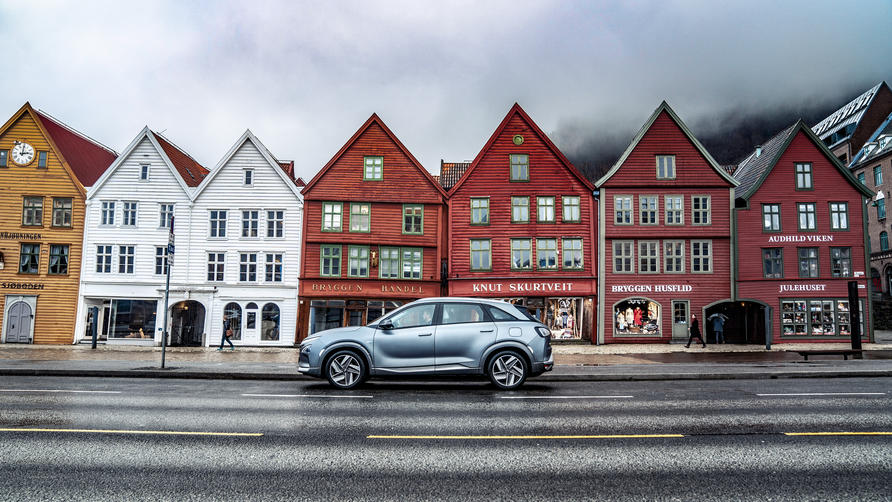
But herein lies one of the major issues with hydrogen: infrastructure. Just like EVs in their infancy, hydrogen cars are stuck playing chicken versus egg versus chicken with the tech. No one wants a hydrogen car they can’t refuel, no one wants to invest in infrastructure with so few customers, no one wants to build a load of cars that nobody wants to buy. Investigating the hydrogen maps draws up more blanks than it first appears – lots of the ‘hydrogen highway’ fuelling stops turn out to be either inaccessible industrial operations or ‘proposed’. You can’t trust the internet. Who knew? Still, we know the one in Bergen is operational. Apparently.
So we flew into Oslo and picked up the car. Then we topped it off at a cell-station in Sandvika, and pottered off west. Plenty of sightseeing along the way, before climbing up the Hardangervidda (the Hardanger Plateau), doing something near the Hardanger Fjord, and trotting across the new Hardanger Bridge, though I’m not totally sure we did that due to a confusion of weird vowels in the Norwegian language. Temperatures dropped to about minus 10, the roads became mottled slivers shot through a cocaine-white landscape, the margins marked by 10-foot-high poles. The Nexo just battered on, not losing any undue range even though heaters were on full, and the driving was normal. So far, so hydrogen.
But why Norway? Well, Norway loves alternative fuels. It abolished import taxes for EVs in 1990, when everyone else was worrying about which headband to wear with what legwarmer. The Norwegian EV Association started in ’95, when most of us were busy buying diesels, and the progressive and aggressive love of alternative fuels hasn’t abated. We’re here because Norway, domestically, gets about 98 per cent of its total energy generation from renewables, mainly hydroelectric, of which we saw at least two big stations on our run, and therefore it’s the greenest place in Europe to roadtrip a ZEV. There are countries in the world that manage more – Iceland, for instance, manages 100 per cent renewables from geothermal energy (the island is basically one giant volcano farm) – but not many have the political or personal passion for EV that Norway manages.
Dig into the really boring bits of legislation, and you’ll see a real willingness to embrace renewables and green policies regarding all sorts of envirotech, probably trying to offset the fact that Norway is one of the world’s largest exporters of oil and gas – a bit like the EVs it loves, Norway punts its carbon loading away from the immediate area. Still, the 2018 stats are pretty bonkers: there were 200k BEV (battery electric vehicles) in Norway in 2018, and the Norwegian parliament has expressed its desire that all new cars sold should be ZEV (zero emissions vehicles – battery or hydrogen) by 2025. BEVs and plug-in hybrids pulled nigh-on 50 per cent of the market share last year, and the Nissan Leaf was the bestseller. Of everything, of any fuel type – the first time a BEV has managed that position anywhere in the world.
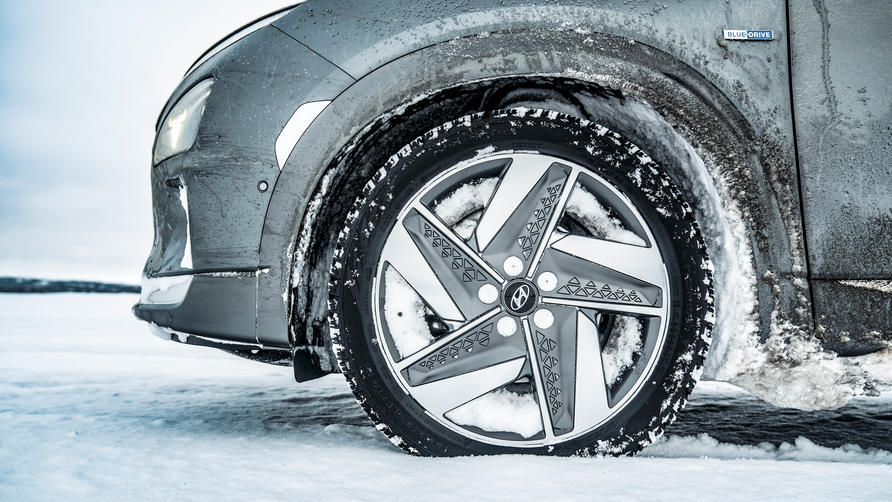
But for me, it comes down to the more practical stuff. In Norway, an EV (electric or hydrogen) attracts no purchase or import tax, no road tax, no tolls or ferry charges (but this changed a bit recently to a max of 50 per cent of charges on some routes), exemption from the 25 per cent VAT on purchase, a maximum 50 per cent charge on parking – it was free anywhere for EVs until this year, but there are so many EVs now that it no longer makes sense), access to bus lanes (again, being reviewed because of practicality, and probably changing to just multi-occupancy EVs), company tax down to 40 per cent, exemption from 25 per cent VAT on leasing. And all this stuff is guaranteed until about 2021.
Oh, and there’s other stuff, like a generous scrappage scheme for ICE vans if switching to electric, and being able to drive bigger vans on smaller licences if they’re ZEVs. The vans, not the licences. Indeed, the way it seems to work is that the higher taxes on polluting cars essentially pay for the incentives for EVs. With no import tax and no VAT, if you try and import an EV over a similarly specced ICE model, the EV comes out considerably cheaper, even if the purchase price wasn’t. Hence the proliferation of Tesla taxis. Drive a Nexo, Tesla, Toyota Mirai or Nissan Leaf or anything that isn’t spewing localised CO2, and the savings add up. As a rough guide, a Tesla P75D costs less than a 2.0 TFSI Audi A7. And if you want a more apples vs apples scenario, a well-equipped-as-standard Volkswagen eGolf costs a couple of grand less than a VW Golf 1.0 TSI to buy. So you can see most people’s reasoning.
Top Gear
Newsletter
Thank you for subscribing to our newsletter. Look out for your regular round-up of news, reviews and offers in your inbox.
Get all the latest news, reviews and exclusives, direct to your inbox.
Then there’s the infrastructure. Unlike hydrogen fuelling stations, charging points – and fast ones – breed on most walls in Norway. There are stop-gaps every 50km on motorways and pretty much every major road, and enough of them to charge a lot of cars at once. They all appear to work, and I saw evidence of people at a hotel in Hemsedal moving their cars once they’d charged, to free up the space for others. Of course, all of this BEV good news isn’t actually all that much help when you’re 50km from the only place to fuel up with hydrogen in the vicinity of Bergen and there’s 65km of range left. It sounds plenty, but you can’t just roll to the next petrol station – if you miss the mark, get lost or drive especially hard, you’re on the back of a truck. And yet the Nexo actually delivered well above expectation. I may drive like a man with sore feet, but the Hyundai delivered well in excess of the 600km range it showed (around 640). I wasn’t hypermiling, switching off the aircon or being nice to it, either. It just did the job it said it would, was comfy, and remarkable in its cutting-edge unremarkableness. It’s a genuine mature option – albeit infrastructure-limited at the moment – for those who want a zero-emissions option.
Welcome to the reality of the greenest roadtrip in Europe
It’s funny, then, that the people most vocal about hydrogen cars being unworkable tend to be into battery EVs. New tech tends to be tribal, and the sniping between proponents of hydrogen and BEV diehards is laughable, really – although Elon Musk’s assertion that hydrogen-power was for ‘fool-cell vehicles’ walks the line between clever comeback and over-thought scripting.
Why? Because the truth is that both are electric vehicles. Both get their motivation from electric motors, it’s just that BEVs use a battery pack of cells to power them, and an FCEV like our Nexo uses a PEM and storage tanks full of compressed hydrogen. So fighting about which is more ‘pure’ seems moot. But it is true that hydrogen isn’t as efficient as pure battery power at turning electricity into forward momentum. Mainly because it introduces steps into the process of getting the energy into the car. After all, you charge up a BEV with the same colour of electricity as you make at the power station, and you don’t have to go around electrolysing hydrogen and then forcing it to do gymnastics in a fuel cell in-between. Hydrogen is hard to find, and costs roughly the same as a tank of diesel to fill a Nexo (at just over 6kg of compressed gas). Batteries in BEVs are heavy, but so are tanks and the gubbins required for hydrogen, so they weigh, again, roughly the same size-for-size.
And even if you electrolyse hydrogen on-site using a wind turbine and deliver direct and local, you can do exactly the same thing more simply by delivering that electricity direct to a BEV battery. Mind you, hydrogen can also be mixed into existing gas supplies and separated out at the point of use, so wouldn’t require delivery trucks. Even so, the domestic passenger FCEV is almost an entire, perfect irrelevance. A kind of add-on to the whole pitch.
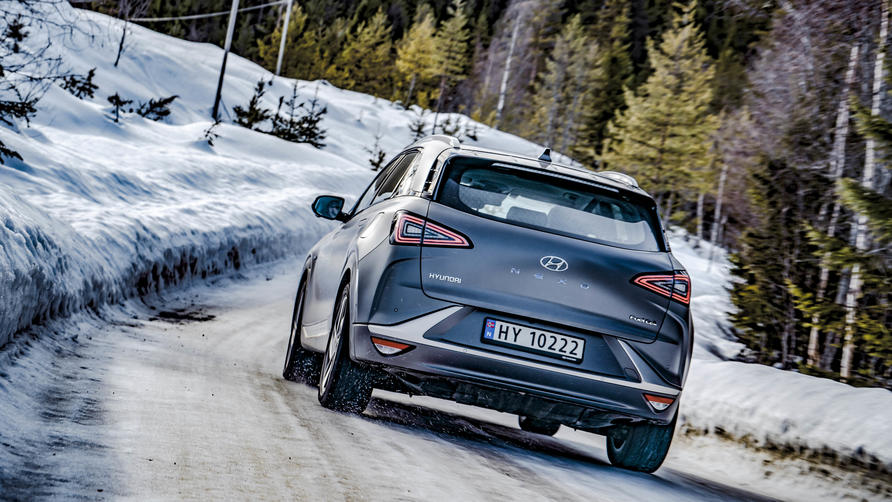
So what’s the point? Well, the thing with hydrogen is that it requires no change in behaviour, that it can be independently portable, and its scaleability. You can have an FCEV if you live in a tower block. If you could happily fuel it, you can go as far as you want, just like an ICE engine. Whack in a few more fuel cells and some big tanks (it’s been done), and you can power buses and trucks and ships without a problem, something that’s a lot harder to do with the (currently) quite heavy commercially available batteries. Of course, as battery tech matures even further, that advantage will close, but hydrogen requires no downtime. Think of all those hauliers and taxis and buses that could fuel with low-cost, bulk-bought hydrogen and never have to go offline to charge for a few hours. Those super-polluters – ships – that could really make a dent in greenhouse gas emissions by running hydrogen power. It’s not about the technology being mature. It’s about the technology being mature enough to stand scrutiny. After that, it’s just habit. And habit and technology are two things that mutate and mature like viruses. Case in point? We’ve been roadtripping a hydrogen car and it required no change in mindset at all – just the forward planing that’s become second nature to a lot of EV owners.
In fact, as we battered back from a five-minute refuel in Bergen, ran through the Lærdal Tunnel (currently the longest road tunnel in the world), tramped across Norway’s inhospitable-feeling bits and generally tried to make the Nexo fail at something, the only thing that really mattered as a downside was the fact that it wasn’t that convenient to fuel it. A point made when we thrashed the car around on an ice lake for half an hour and started to scrape the range vs refuel equations to their limits. We made it back – just – but otherwise, it was a drama-free trip.
So hydrogen hasn’t stalled. It may have gone a little quieter, subsumed by the clamour for BEVs, but it’s real, usable and safe. Hyundai (and Toyota with the Mirai) has produced a real-world hydrogen car already – we just need the opportunity to use them. And Norway is a testament to how low-end tax and high-end infrastructure will influence consumer behaviour. A study of the reasons why Norwegians bought EVs, 41 per cent simply said ‘to save money’. Not eco warriors or early adopters. You make it make sense to normal people, and it becomes the new normal. Like I said, hydrogen isn’t dead, it’s just slowed down while the rest of us catch up.
Trending this week
- Car Review
Ferrari Amalfi




